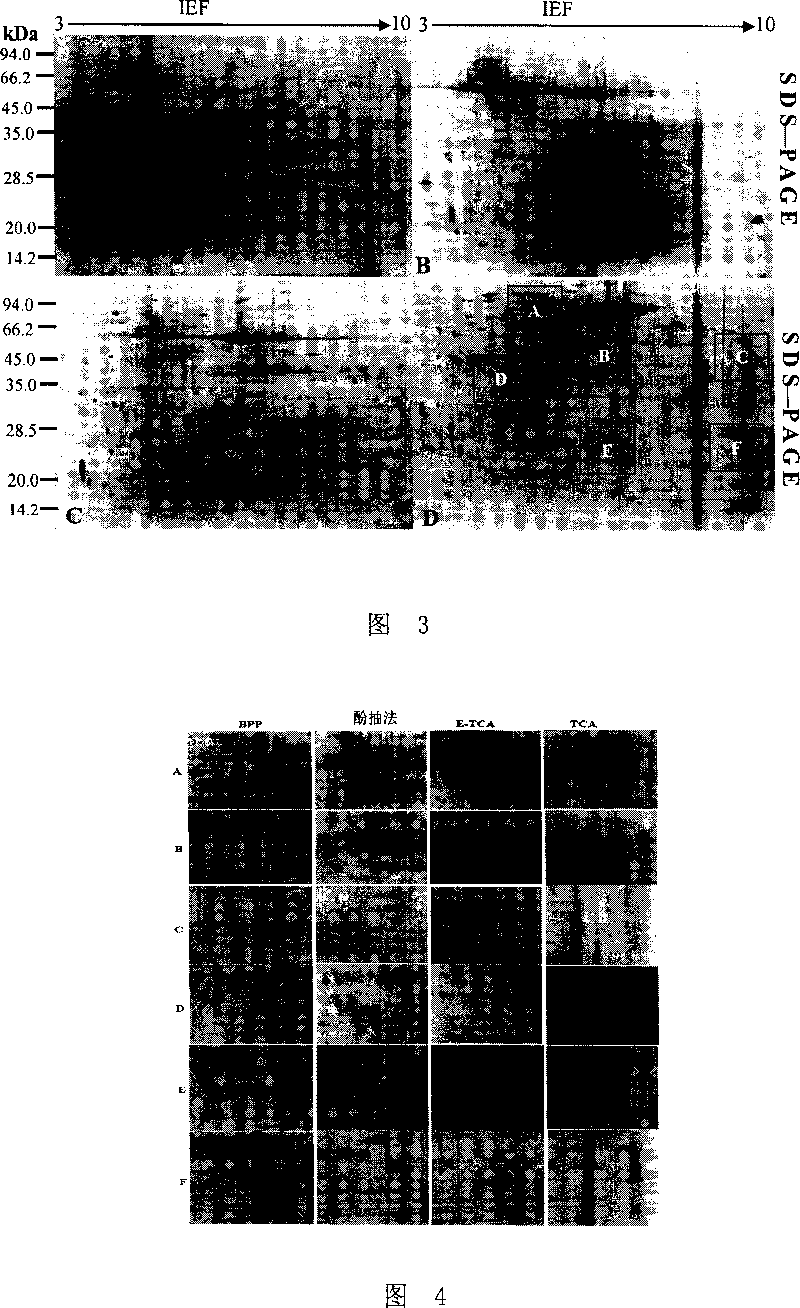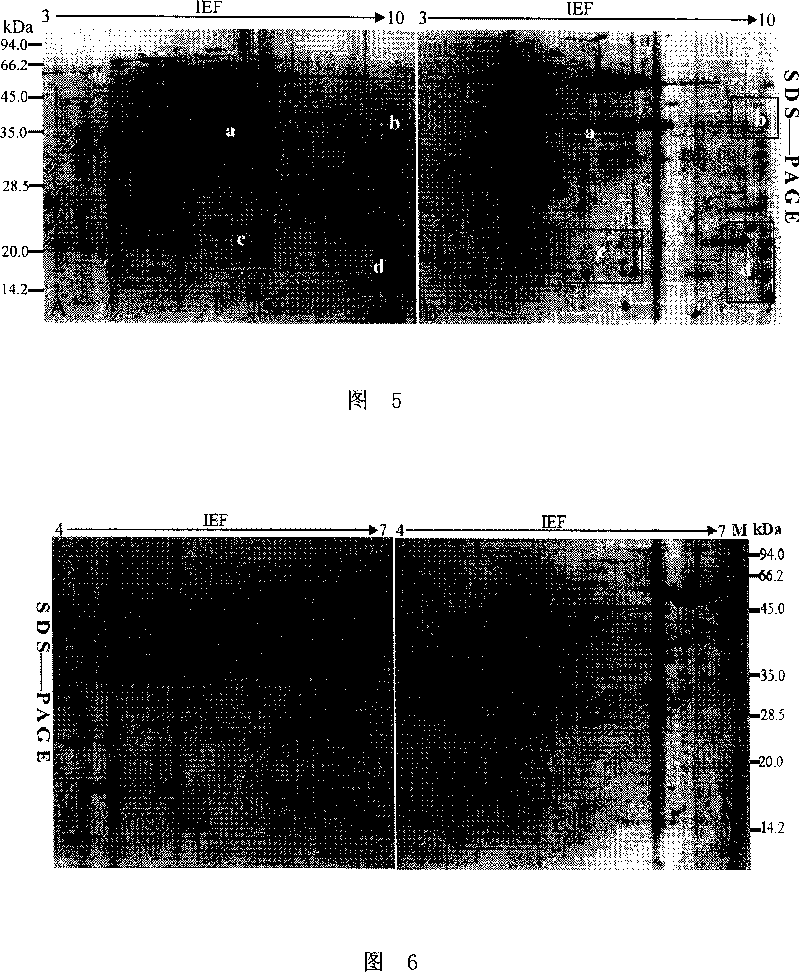Extraction method of plant total protein and special extract for the same
A technology of plant total protein and protein extract, which is applied in the preparation of plant peptides, test samples, peptides, etc., and can solve the problems of no way to remove salt ions and difficult protein solubility
- Summary
- Abstract
- Description
- Claims
- Application Information
AI Technical Summary
Problems solved by technology
Method used
Image
Examples
Embodiment 1
[0037] Embodiment 1, TCA method, E-TCA method, phenol extraction method and BPP method of the present invention extract the one-dimensional electrophoresis comparison of the total protein extraction effect of Salicorniaeuropaea
[0038] At present, the commonly used plant protein extraction methods mainly include TCA, E-TCA and phenol extraction method. Now, the euhalophyte Salicornia europaea (Salicornia europaea) treated with different concentrations of NaCl is used as the material, and the TCA is compared by SDS-PAGE one-dimensional electrophoresis. The extraction effect of method, E-TCA method, phenol extraction method and BPP method of the present invention, concrete method comprises the following steps:
[0039] 1. Salicornia cultivation and salt treatment
[0040] Salicornia has significant salt-accumulating characteristics, and it needs to grow under certain salinity conditions to achieve the best growth (Davy A J, Bi shop G F and Costa C B.Salicornia L.(Salicornia pus...
Embodiment 2
[0055] Example 2, SDS-PAGE one-dimensional electrophoresis detection of different tissue protein extraction effects of different plants using BPP method
[0056] Now use the BPP method of the present invention to extract the total protein of fourteen kinds of plant different tissues, including four kinds of woody plants (pine (Pinus bungeana Zucc.), Canadian poplar (Populus canadensisMoench.), hickory ( Carya illinoinensis K.) and Peach (Prunus persica Rehd.), carried out SDS-PAGE detection to the extraction effect, and the detection results were as follows figure 2 Shown (swimming lanes 1-3 are respectively the total protein extracted from the needle leaf (swimming lane 1), branch phloem (swimming lane 2) and xylem (swimming lane 3) of pine (Pinusbungeana Zucc.); Swimming lanes 4-6 are respectively from Canada Total protein extracted from leaves (lane 4), phloem (lane 5) and xylem (lane 6) of poplar (Populus canadensis Moench.); ), peach (Prunus persica Rehd., lane 8), plant...
Embodiment 3
[0057] Embodiment 3, extract the productive rate of different tissue protein of different plants with BPP method
[0058] The BPP method was used to extract the total protein of sixteen kinds of common plants (see Table 1 for the plant name) in different parts and different tissues, and the protein content was determined, and the protein extraction rate was calculated. rapid and sensitive method for the quantitation of microgram quantities of protein utilizing the principle of protein-dye binding. AnalBiochem, 1976, 72: 248-254.), using a UV spectrophotometer (Shimadzu UV-160, Kyoto, Japan), and then measuring OD 595 The protein extraction yield was calculated, and bovine serum albumin (BSA) was used as the standard for calibration. The detection results of protein yield are shown in Table 1. BPP method can be used to extract an average of 2.0 mg of protein per gram of fresh plant material. The yield of protein extracted from leaves is higher than that of other tissues. The ...
PUM
 Login to View More
Login to View More Abstract
Description
Claims
Application Information
 Login to View More
Login to View More - R&D
- Intellectual Property
- Life Sciences
- Materials
- Tech Scout
- Unparalleled Data Quality
- Higher Quality Content
- 60% Fewer Hallucinations
Browse by: Latest US Patents, China's latest patents, Technical Efficacy Thesaurus, Application Domain, Technology Topic, Popular Technical Reports.
© 2025 PatSnap. All rights reserved.Legal|Privacy policy|Modern Slavery Act Transparency Statement|Sitemap|About US| Contact US: help@patsnap.com



